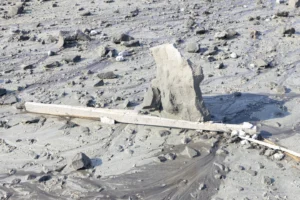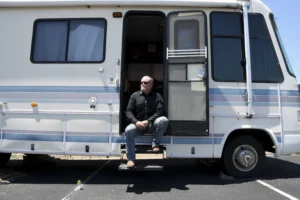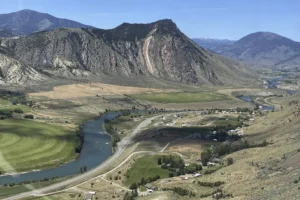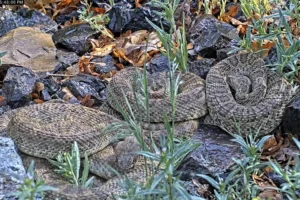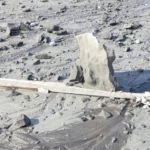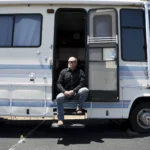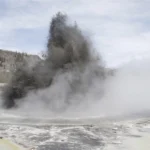Wildlife Biologist: Progress Made on Removing Wild Horses, But Thousands Still Need to Go
Federal estimates say feral horse populations in Wyoming’s herd management areas are double what they should be
- Published In: Other News & Features
- Last Updated: Oct 19, 2023

The Bureau of Land Management estimates Wyoming housed 8,828 wild horses in its 16 herd management areas as of March 1. The total “appropriate management level” set by this agency for these areas is 3,725 horses. (Courtesy photo from the U.S. Bureau of Land Management)
By Shen Wu Tan
Special to the Wyoming Truth
This story was updated for clarity on October 19, 2023, as of 11 a.m. MT.
State and federal officials have made progress on controlling wild horse populations in Wyoming, but thousands more of these animals still must be removed to meet “appropriate management levels,” Pat Hnilicka, supervisory fish and wildlife biologist for the U.S. Fish and Wildlife Service in Lander, told the Joint Agriculture, State and Public Lands and Water Resources Committee earlier this month.
Hnilicka noted about 6,500 wild horses were removed from January to August, but their overabundance has disrupted migration patterns of wildlife and stripped lands of forage.
The Bureau of Land Management (BLM) oversees 16 wild horse herd management areas that span nearly 5 million acres in Wyoming. As of March 1, BLM estimated Wyoming housed 8,828 wild horses in these areas, which is more than twice what the agency calls an appropriate number—3,725 animals.
“Gov. [Mark] Gordon continues to recognize that Wyoming’s wild horse populations on federal and tribal lands have long exceeded appropriate management levels,” Nolan Rap, natural resources policy advisor for the governor, told the committee. “This is not ecologically sustainable and threatens wildlife and multiple use of our public and tribal lands.”
Rap presented the committee with a memo from the governor’s office, which acknowledged that although wild horses fall under the authority of the federal government or tribes, the state legislature had set aside funding to support local programs to address the reported surplus of feral horses.
One program is the Wyoming Honor Farm Wild Horse Program, in which selected inmates train the animals under the supervision of prison employees. The program auctioned off 45 trained animals in May during one of two auctions it hosts annually to find homes for the horses.

The governor’s office allocated $100,000 to purchase horsemanship training, new saddles and fencing pipe as outlined by a 2022 agreement. All but about $3,920 of this money has been spent, according to Rap, citing the memo.
“The governor is committed to using all the tools in the toolbox as a solution to the wild horse overpopulation,” the memo states. “These tools include gathers, fertility controls, off-range hold facilities, adoptions, etc.”
The Shoshone and Arapaho Tribal Fish and Game Gathers, another local project, also strives to control feral horse populations.
The program collaborates with the Northern Arapaho and Eastern Shoshone Tribes to remove nearly all wild horses from the most populated areas on the Wind River Reservation. Another goal is to keep a “remnant herd of free-ranging feral horses in the northern range for aesthetic purposes,” according to the governor’s office. Participants also plan to conduct yearly removals of feral horses to keep populations within appropriate management levels, but removals will depend on available funding.
With $400,000 in state funding, participants gathered and removed 1,429 feral horses from the reservation early this year. Matching funds from other sources enabled the gathering of nearly 600 additional horses, for the removal of almost 2,000 in total.
Opposition to wild horse management plans
To maintain a “stable level” of 500 wild horses on the reservation, wildlife officials estimate an additional 1,500 horses would have to be relocated from 2024 to 2025, along with 80 horses annually after that.
Wild horses have overgrazed in upland range and riparian habitats in the Wind River Reservation, “altering plant composition, degrading water quality, and severely outcompeting native wildlife like bighorn sheep, mule deer, antelope, elk and moose,” according to the memo from Gordon’s staff. In addition to native wildlife, cattle also are competing with feral horses for grasses and forbs.
Arthur Lawson, director of Shoshone and Arapaho Fish and Game, told the committee that thanks to the wild horse gathers, mule deer are returning to previously crowded areas.
“I think it shows what happens when we can work together, and it also shows what happens when we control an invasive species and how the natural wildlife flourishes,” said Sen. John Kolb (R-Rock Springs), a committee member, about the efforts to remove wild horses.
However, plans to remove more of these horses have faced backlash from some advocacy groups.
In May, wild horse advocates, including Animal Welfare Institute, American Wild Horse Campaign and private citizens, filed a lawsuit against the BLM for its plan to completely remove wild horses from some herd management areas in Wyoming.
“The legal violations alleged in this petition, traceable directly to BLM’s conduct, cause concrete injury to the aesthetic, conservation, recreational, scientific, educational, historic, cultural and wildlife preservation interests of petitioners and their members, including by reducing their opportunities to view, and/or adversely affecting the behavior of, the wild horses,” the lawsuit states.
The case is currently moving through the U.S. District Court for the district of Wyoming.

